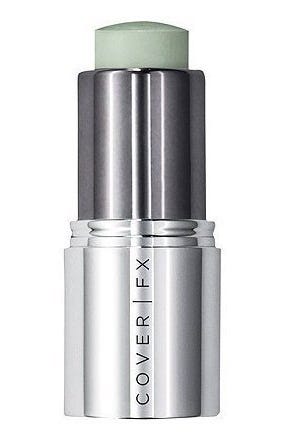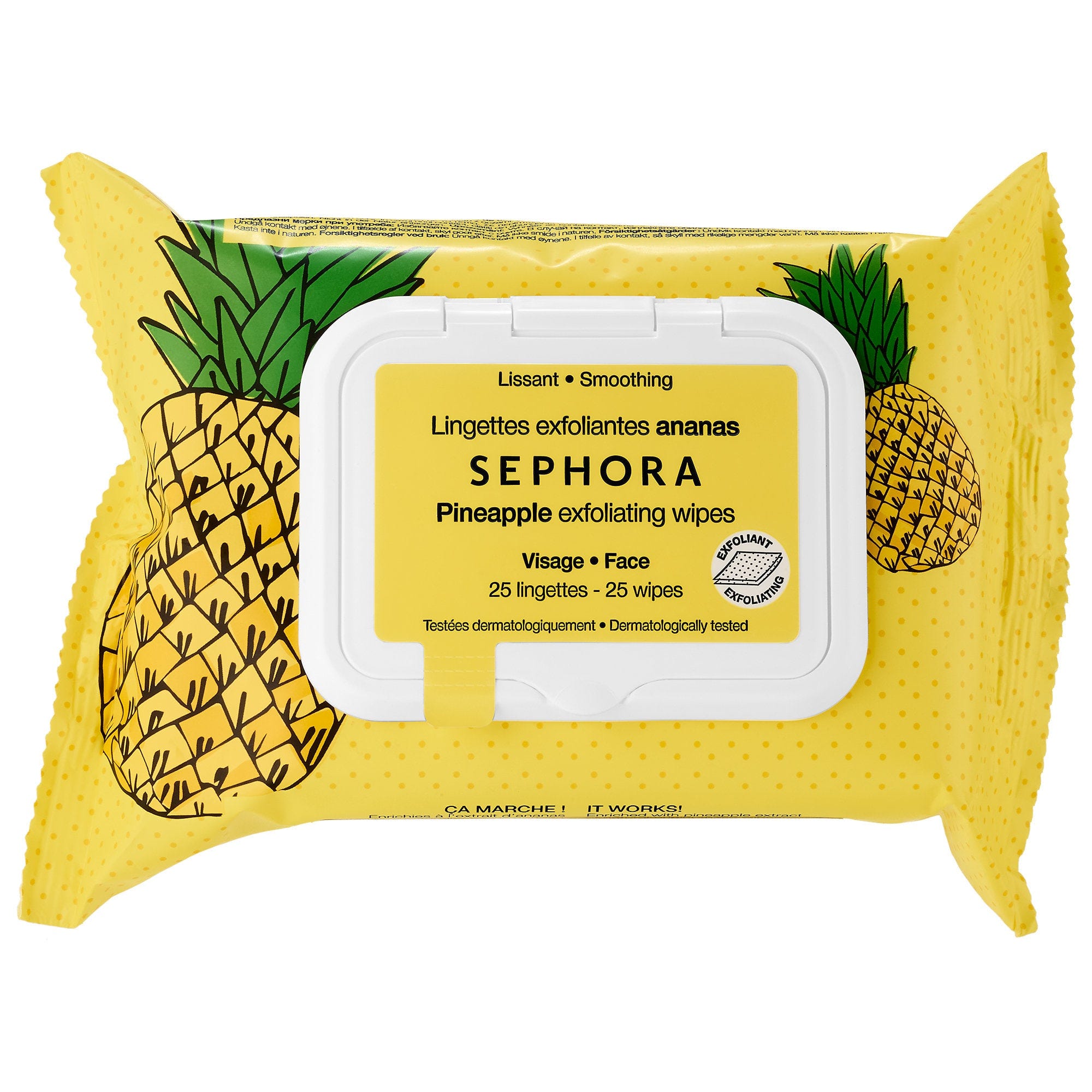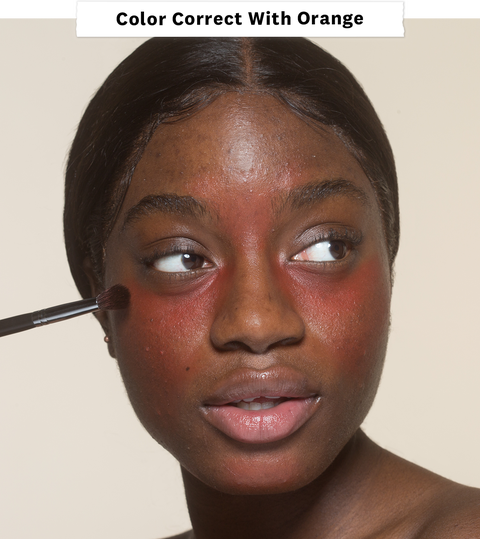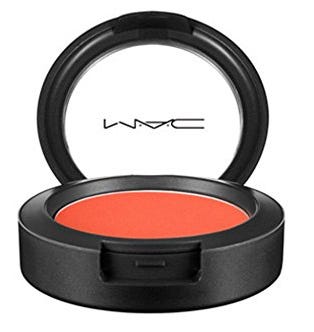You Need To See These Incredible Skin Transformations

Courteny Leiter, who’s been dealing with acne since age 11, says when her skin looks bad, she doesn’t want to leave her house.
“I lose full confidence in myself and it becomes an impossible task to find any ounce of wanting to go outside and be a normal person,” says Courtney.
Living your life dictated by the whims of your acne is less than ideal. So New York City-based makeup artist Mimi Quiquine and Joshua Zeichner, M.D., director of cosmetic and clinical research, department of dermatology, The Mount Sinai Hospital, came to the rescue to help Courtney and two other women develop a routine that puts them back in charge of their skin.
Courtney Leiter
Courtney Leiter
What she says about her acne:
“Acne is hard for me,” says Courtney. “When I was younger I tried everything under the sun: spot treatments, serums, herbal oils, and going to the dermatologist to get prescription meds, but I still haven’t figured it out today.”
Sure, her routine has improved over the years: She used to keep her makeup on all the time, including when she went to sleep, but now, no matter how tired she is, she takes it off. Here’s a peek at her routine:
She struggles with her skin being very oily around her nose, and the rest of her face, particularly her forehead, feeling very dry.
Courtney says she’s still trying to nail down a makeup routine that works for her. “When I was younger, oh my god, I used to cake it on,” she says. “Now I’m okay with just a little bit of concealer—but if I’m going out or it’s an important event, I will still pack [makeup] on.”

Women’s Health
What the makeup artist says:
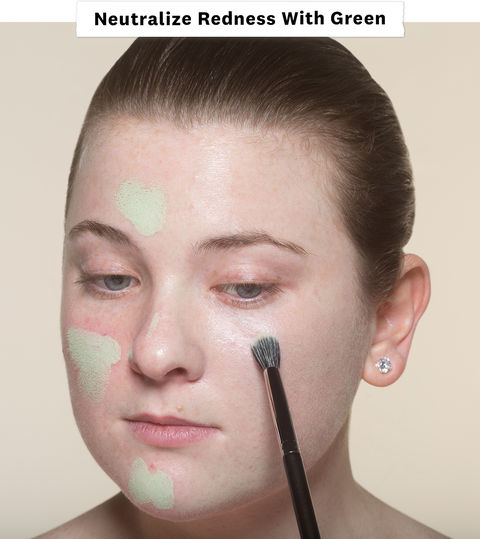
First things first: Quiquine started off by prepping Courtney’s skin with Dr. Barbara Sturm Calming Serum to soothe it. “Make sure you’re moisturizing in upward motions because it helps with the firmness of your face and really works the serum into your skin, she says. “Avoid downward motions.”
Next, she used Cover FX Correct Click Green to neutralize the redness in Courtney’s cheeks, forehead, and chin. “A lot of time the mistake people make is they just cake their face in foundation to try to hide the redness, and then you end up having a layer of foundation that doesn’t look natural,” she says. “This cancels the redness out, so you’re able to put the amount of foundation that your skin needs as opposed to layering and layering.”
Then, she applied Chanel Ultra Le Teint foundation. She likes this Chanel foundation because it has “buildable” coverage—perfect for someone who needs more in certain areas. “It also has a combination of absorbent powders and a duo of zinc and polysaccharide to keep shine under control and offer a long-lasting, 12-hour matte finish,” says Quiquine.
Quiquine used a color-corrector underneath Courtney’s eyes, too. “This is a peachy color that’s going to balance out the purples and blues underneath her eyes,” she says. “If I still need to add concealer after I will, but this is a way of using minimal product.”
To finish the look, Quiquine used NARS Radiant Creamy Concealer, a clear brow gel from MAC, Chanel Inimitable Mascara, and Chanel Healthy Glow Luminous Powder.
What the dermatologist says:
“For this patient, the go-to ingredient for the full face would be a topical retinoid,” says Zeichner. “They help reduce skin inflammation, keep pores clear, and can improve skin texture and the appearance of marks.”
Because her skin is sensitive, she can dilute out the retinoid in equal parts with a bland moisturizer and apply to the full face every other night. Over the counter, she can use Differin 0.1% gel. If she develops an individual red, angry pimple, she can spot treat it with 2.5% benzoyl peroxide, like Neutrogena On-the-Spot Acne Treatment.
Madeline Clough
Madeline Clough
What she says about her acne:
“I started getting acne when I began taking birth control, around 17 or 18, but now it’s mostly scars,” she says. “I’ll get some acne around my period. Evening out my skin tone is the biggest concern as of now.” Her skin also gets really dry, particularly in the winter. Here’s what her routine looks like:
“It doesn’t really bother me that much anymore, but I still like to wear makeup most of the time just to make sure my skin is even,” says Madeline. “When I first put it on it looks great, but then throughout the day it settles into the scars, so it doesn’t look as nice as when it goes on.”
Madeline says she uses medium- to high-coverage foundation to try to cover her acne scars, but wishes she could try a more natural makeup look day-to-day.

Women’s Health
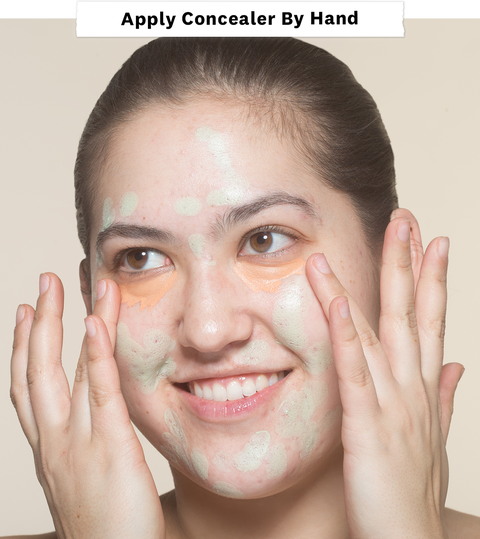
What the makeup artist says:
First, Quiquine cleansed Madeline’s face with Sephora Collection Pineapple Exfoliating Wipes. “The exfoliating side gently eliminates impurities and dead skin cells thanks to integrated microbeads, while the other side cleanses and effectively removes all types of dirt and face makeup,” says Quiquine.
Quiquine also applied a green color corrector as a base, and then peach concealer under her eyes, this time with her fingers. “Using your fingers warms the product and helps it blend into skin better than a brush sometimes,” says Quiquine.
She used a bit more green corrector to even out her base, enabling her to use less foundation. “I’m not going to cake the skin with layer after layer of foundation,” she says.
Since Madeline’s acne is dry, Quiquine took that into account when choosing products for her. “I try to stay away from powders because they will make the skin appear even more dry than it actually is, and I used a moisturizing foundation, Chanel Ultra Le Teint,” she says.
To cover acne scarring, particularly texture issues, Quiquine recommends using a primer to create a smooth, even base. “I recommend Clinique Pore Refining Solutions Instant Perfector. It’s great for anyone who’s had cystic acne. Not only does this blur the most difficult of scarring, but it stays put all day and comes in four shades.”
Quiquine used the Dr. Hauschka Matte and Shimmering Blush Trio to bring color to her cheeks, the same clear eyebrow gel from MAC, and set the look with translucent powder: Laura Mercier Secret Brightening Powder and Chanel Universal Finishing Powder, which she says is much lighter than normal powders.
What the dermatologist says:
Zeichner suggests washing the face twice daily with a 2% salicylic acid cleanser, like Aveeno Clear Complexion Foaming Cleanser. In the morning, apply a benzoyl peroxide treatment like Neutrogena Stubborn Acne Rapid Clear Daily Treatment Mask to the full face.
In the evening, apply a topical retinoid to the full face to help open up pores and reduce inflammation of the skin, such as Differin gel. If the face gets dry, it is okay to apply an oil-free moisturizer. Skin hydration is a separate issue from skin oil and acne breakouts.
Magdelene Barjolo
Magdelene Barjolo
What she says about her acne:
Her skin is oily, but she also deals with dryness. She gets pimples and blackheads, plus has textural issues from breakouts that look like small bumps, particularly on her forehead. Here’s what her routine looks like:
Dealing with acne doesn’t stop Barjolo from playing with makeup. She typically wears a skin tint, setting powder, lip balm, clear eyebrow gel, and occasionally mascara. “If I’m really trying to have that beat look, I’ll wear a foundation and some concealer, contour, and highlight.”
Women’s Health
What the makeup artist says:
Quiquine prepped Magdalene’s skin by cleansing with the Sephora Collection Pineapple Exfoliating Wipes, followed by the Dr. Barbara Sturm Calming Serum.
Since Barjolo has a darker skin tone, Quiquine used an orange blush (MAC’s powder blush in Devil) to color correct. “With deeper brown skin tones, you can use an orange to color correct for dark purples and blues, which we have underneath our eyes,” says Quiquine.
After the orange color corrector, Quiquine then applied Chanel Le Teint Foundation. “With darker skin tones, the scarring from acne is sometimes a little trickier to correct,” she says. “It’s about finding a foundation that provides enough coverage, but is also the correct undertone so it doesn’t end up making you look either too orange or too gray.”
Next, she used concealer wherever Barjolo still needed extra coverage, including a yellow powder under her eyes to help lift and lighten. Since Barjolo has oily skin, Quiquine says it’s important to get a good setting powder and use it as soon as you finish your concealer. “Don’t wait too long because you want set your concealer before any creases appear.”
She topped off the look with MAC cream blush in Premeditated, MAC bronzer, brow gel, and Chanel Poudre Universelle.
What the dermatologist says about her acne:
If you suffer from blackheads and whiteheads, your go to ingredients should be salicylic acid and a retinoid. “Over the counter, a product like Differin 0.1% gel can help reduce skin inflammation, and normalize cell turnover with in the follicle so that sells don’t stick together and clog the pores,” he says.
Clay face masks can be useful as well to help absorb excess oil in the T-zone. Zeichner recommends the Clean & Clear Acne Triple Clear Cleansing Clay Mask.
Source: Read Full Article
